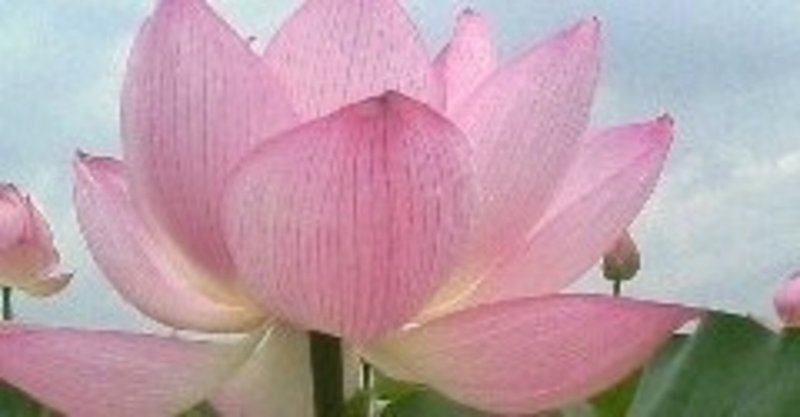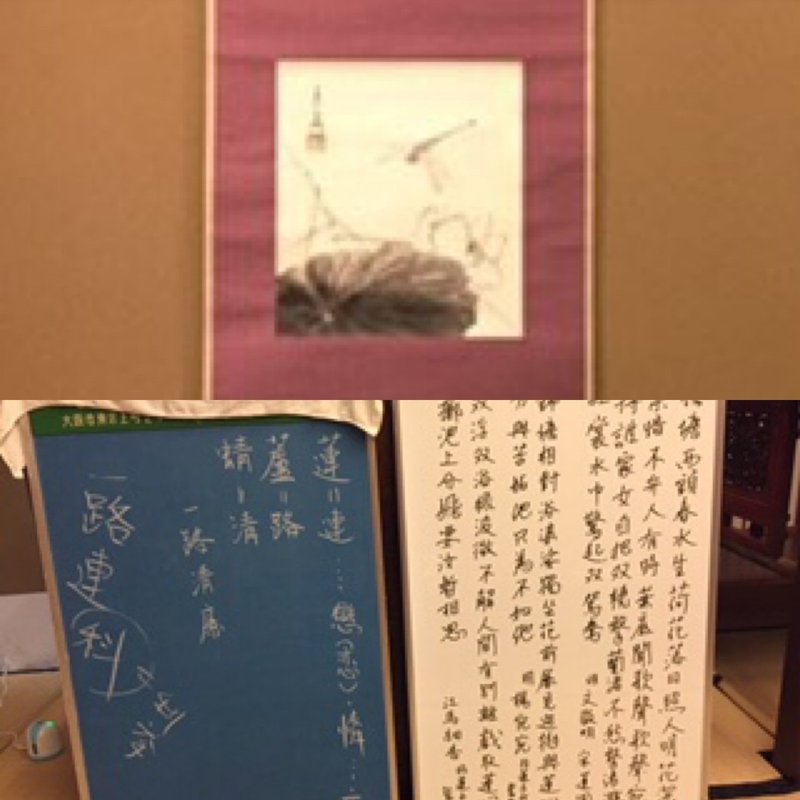
蓮は「清廉な恋」を連想させる。 【蓮シリーズⅢ】 Lotus is reminiscent of "pure love"
暑さが残る夜に、氷水で淹れた “雁が音(茶の種類)” が喉に沁みる。
1煎目を「恋を呼び込む」味、2煎目を「恋を遠ざける」味と評した。相反する意味合いの言葉である。確かに1煎目はまろやかさが立っていた。2煎目では渋味が立ち、まろやかさがなくなっていた。お茶の微妙な味の違いを"恋"に例えて評するのも煎茶らしい。
On a hot night, a tea named Karigane(tea’s name) in ice water go through in your throat.
The first tea was described as "calling in love" and the second tea as "keeping love away". These words have contradictory meanings. Certainly, the first tea was mellow. The second tea had astringency and no mellowness. Sencha is said to be likened to the "love" of the subtle differences in the taste of tea.
その煎茶席で掛かっていたお軸に描かれていたのが蓮。そして1本の蘆(あし)の枝。その横に大きなトンボが枝に留まっていた。蓮の花が描かれていたら、通常なら「オシドリ」が描かれることが多い。
では、なぜ「トンボ」なんだろう。当然、この絵には意味が隠れている。蓮は「恋」を連想させるものである。蘆は「路」を意味する。トンボは「清」を表す代名詞である。
The lotus was drawn on the axis at the Sencha party. And one branch of the reed. A big dragonfly was on the branch next to it. If the lotus flower is drawn, the "mandarin duck" is usually drawn.
Then why is it a "dragonfly"? Naturally, the meaning is hidden in this picture. Lotus is reminiscent of "love". The reed means "road". The dragonfly is a synonym for "clean".

お軸には、蓮・蘆・トンボが描かれています。/ in the axis are lotus and reed, dragonfly
さてさて、ここまで分かれば、どんな言葉が浮かんでくるでしょうか、と促されて想像力を巡らしたが、残念ながら答えは浮かんでこなかった。
答えは「一路清廉」。心清らかな一途な恋を描いたお軸である。(写真は残念ながら見えにくい)
絵を見て、何が想像できるかを楽しむのも乙なものである。
By the way, I was wondering what words would come to me if I knew so far, but unfortunately the answer did not come up.
The answer is "Ichiroseiren". It is an axis that depicts a pure and continuous love. (Unfortunately the photo is hard to see) It's a pleasure to look at the pictures and enjoy what you can imagine.
レポート & 写真 / 渡邉雄二
Reported & Photos by Yuji Watanabe
よろしければサポートお願いします。日本の伝統文化に関心を寄せています。若いころに文化圏の異なる地域の方たちとの交流で日本のことをあまりにも知らなかったことに気づかされ、それがきっかけで広く浅く学んでいます。拙いレポートですが、お目に留めていただければ幸です。
